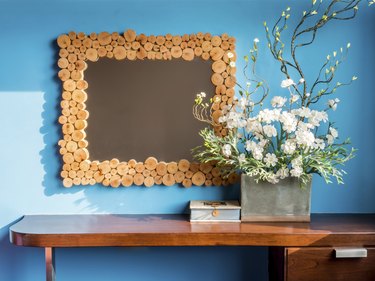
Mirrors are useful plant-growing tools because they can redirect light to places it is needed most. Using mirrors to reflect sunlight for plants can be used in an outdoor garden to help brighten shady areas where you'd like to have more plants grow. Mirrors also help plants thrive indoors, even in those small, dark corners and nooks where sunlight never seems to reach.
Dark Walls and Privacy Screens
Video of the Day
If you have a large expanse of dark space in your home or outdoor garden, you may find that it's difficult to grow anything in or next to that area because the light is quite dim. By simply hanging one or two large mirrors on a wall, or even setting them against a dark outdoor space such as a thick privacy hedge, you'll see that light reflects into the surrounding area the mirror or mirrors face. Adding mirrors creates a new look while providing plants much needed light.
Video of the Day
Deeply Shadowed Nooks
Mirrors can bring natural light to some of the seemingly darkest nooks and crannies, allowing plants to grow there. A garden gazebo may be swallowed by bushes, vines and trees during the rainy season, for instance, making it difficult to grow flowering plants along its edge or flower boxes. If you hang a mirror at the very back of the gazebo, however, the site will instantly appear bright and open because it reflects the yard's lighter areas. The increased brightness is often all that's needed for border flowering plants to thrive.
Using Mirrors to Reflect Sunlight
Mirrors can either reflect or redirect light. When you place a mirror immediately behind a plant, that plant will benefit from the light that the mirror reflects. When it's not practical to place a mirror right next to a planting area, however, often the mirror can be placed at an angle so that it redirects light to the area. By bouncing light in this manner, it is possible to redirect the brighter light conditions to a darker one.
Mirrors will not increase the amount of sunlight coming in, but can redirect the amount of light to darker locations. If using several mirrors in the same location, a portion of light is reduced because it bounces off each mirror causing a reduction with each bounce.
Artificial light is also enhanced by adding a mirror to the wall behind the plants, so the rays of the grow or fluorescent fixtures bounce toward the leaves. This can increase the light levels around the plants as well as balance the intensity of light on every side, reducing the number of times you have to turn the plant so it doesn't lean toward the primary light source.
Reflect Light from Pale Walls
Many plants benefit from any increase in light. Mirrors can help you take advantage of that factor when you place them near light-colored objects. White or light-colored pastel walls, for example, increase light in an area automatically because their light color is reflective on its own. By using a mirror to reflect sunlight and placing it strategically, it can direct the brightness of the sun onto a light-colored wall or reflect the light from the wall onto your plants. The plants will receive the benefits of the wall color even if no sunlight shines directly into the area.